We may be compensated if you purchase through links on our website. Our team is committed to delivering honest, objective, and independent reviews on home products and services.
The best way to encourage youngsters to take out and return their own books and toys is to make a creative case that speaks to them at their own level. We scaled ours so the highest shelf is about 24 inches above the floor—perfect for the average 3-year-old—yet useful enough to keep up with her needs as she grows.
Wide, deep shelves accommodate a range of books or craft supplies, low-slung cubbies corral toys, and the whole thing rolls on wheels to make rearranging the furniture easier.
Download and print the cut list and dimensional drawing for this project.
Steps for Building a Kids’ Bookcase
Read our guide and watch the video above featuring This Old House senior technical editor Mark Powers, who uses basic home-center parts to make a custom storage solution that will inspire kids to tidy up.
Step 1: Kids’ Bookcase Project Overview
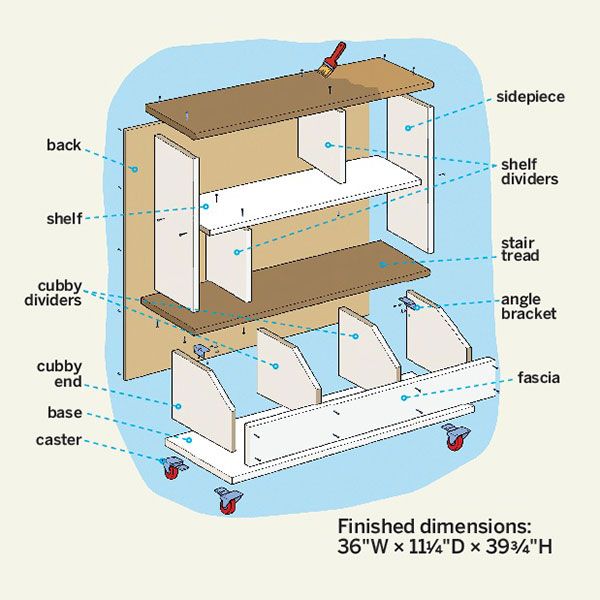
- SATURDAY: Build the cabinet and cubbies (Steps 2–8).
- SUNDAY: Join the two halves and paint the back (Steps 9–13).
Cut List for Building a Kids’ Bookcase
- Two oak stair treads, 1-by-11 1/2 by 36 inches
- One 1-by-12 pine shelf, 33 inches
- Two 1-by-12 pine sidepieces, 22 3/4 inches
- Two 1-by-12 pine shelf dividers, 11 by 11 inches
- Two 1-by-12 pine cubby ends (see diagram)
- Two 1-by-12 pine cubby dividers (see diagram)
- One 1-by-18 pine edge-glued panel base, 33 inches
- One 1-by-6 pine fascia, 34 1/2 inches
- Lauan back (cut to fit)
Step 2: Size the Parts

Use a circular saw to rip and cut the pine boards to final dimensions according to the cut list.
Step 3: Rabbet the Edges
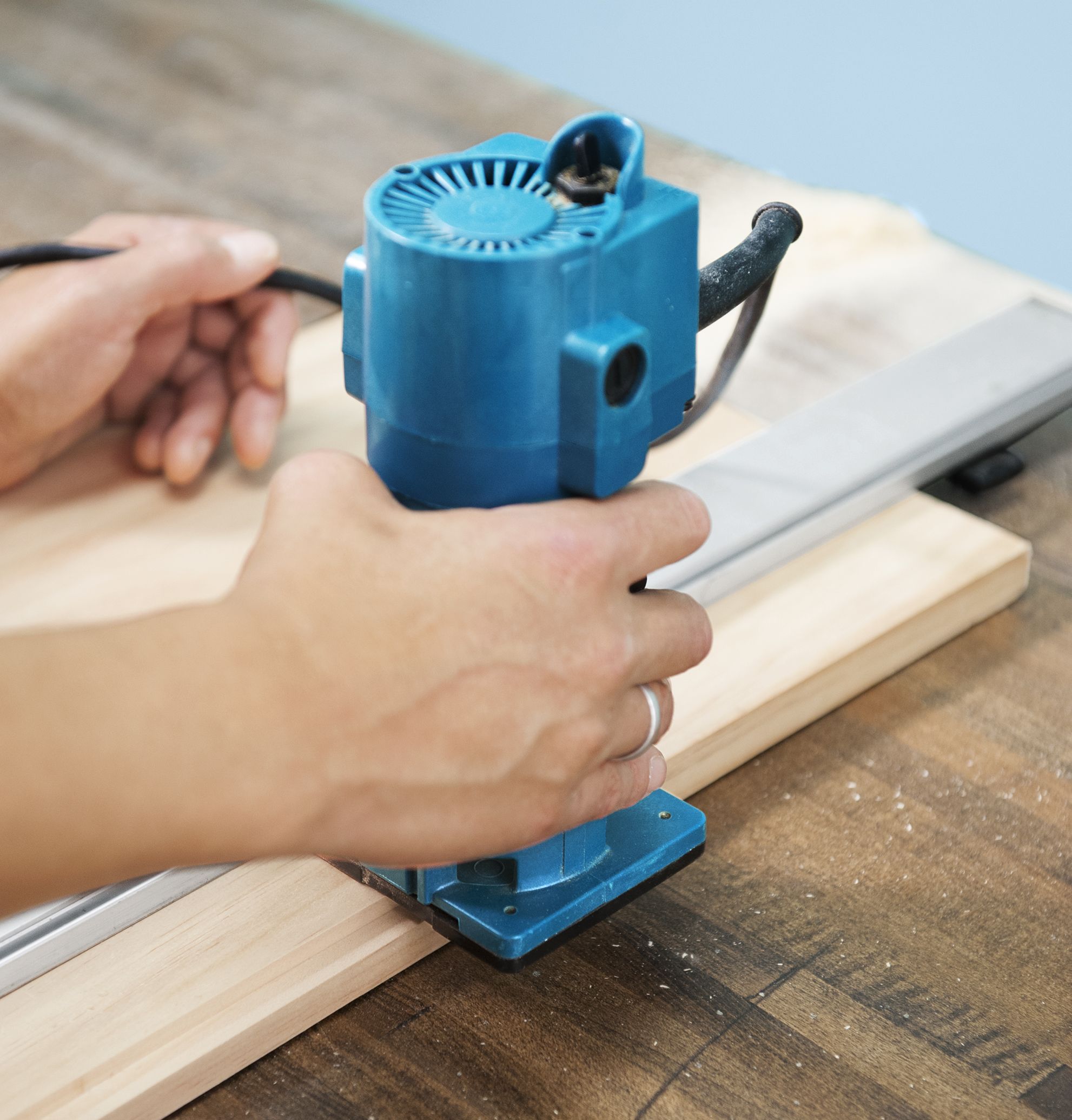
The sides of the cabinet are grooved along the rear edges to accept the backing. To cut the rabbets, fit a trim router with a 1/4-inch straight cutting bit and adjust it with 3/8 inch extending below the base. Clamp a sidepiece to the work surface and set a straightedge so the router cuts a 1/4-inch-wide L-shaped channel. Starting at the corner, push the router forward along the right side of the straightedge so that the clockwise-spinning bit bites into the wood. Rabbet cubby ends, too.
Step 4: Mark the Treads
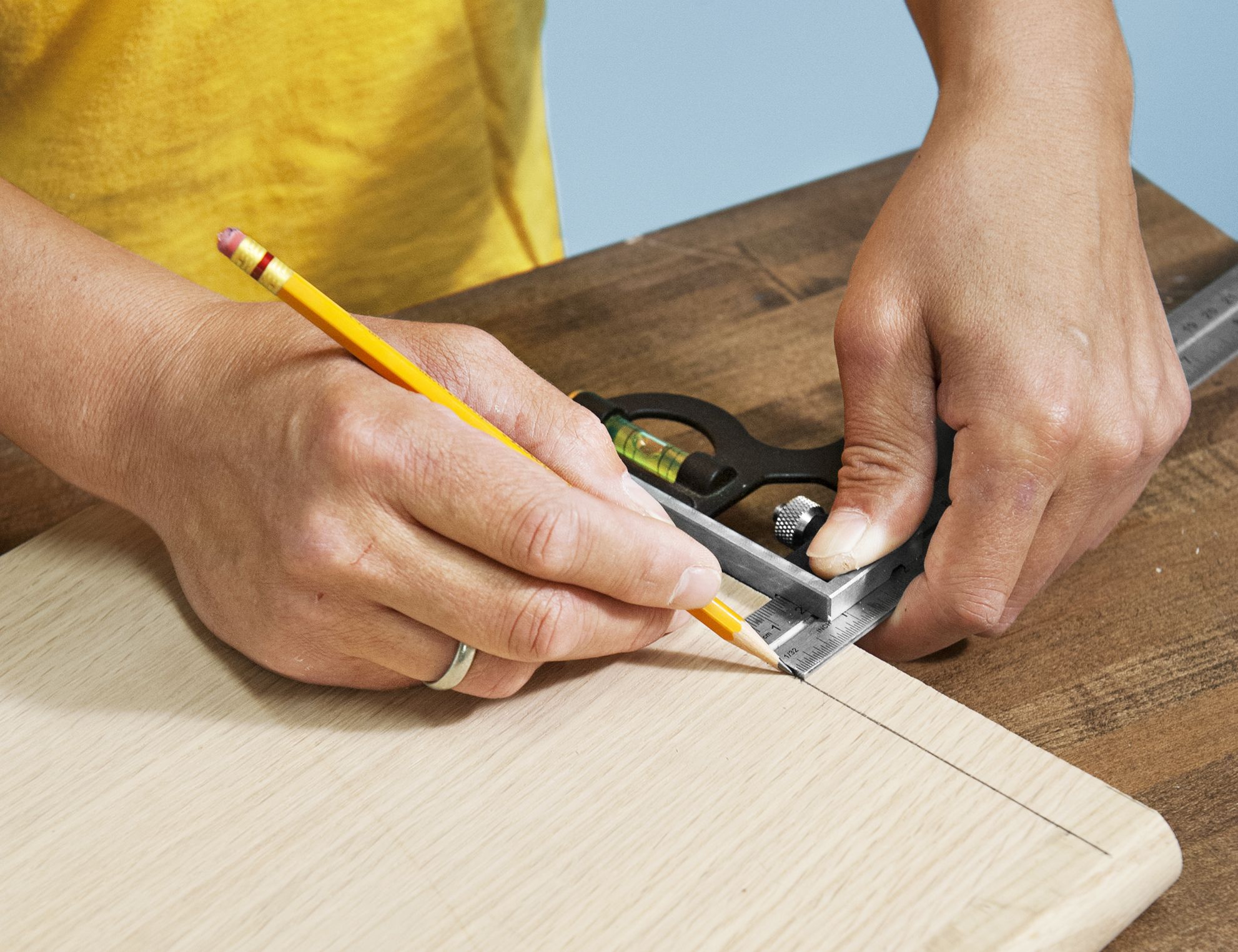
Use a combination square to mark lines 1 inch in from each end of the stair treads on both faces to indicate where to screw them to the sides of the bookcase. Drill two pilot holes on the line, each an inch or so from the long edges of the board; be sure to go through the top tread’s best face and the bottom one’s hidden face. Stain the treads, prime, and paint the pine parts, then let everything dry.
Step 5: Attach the Sides
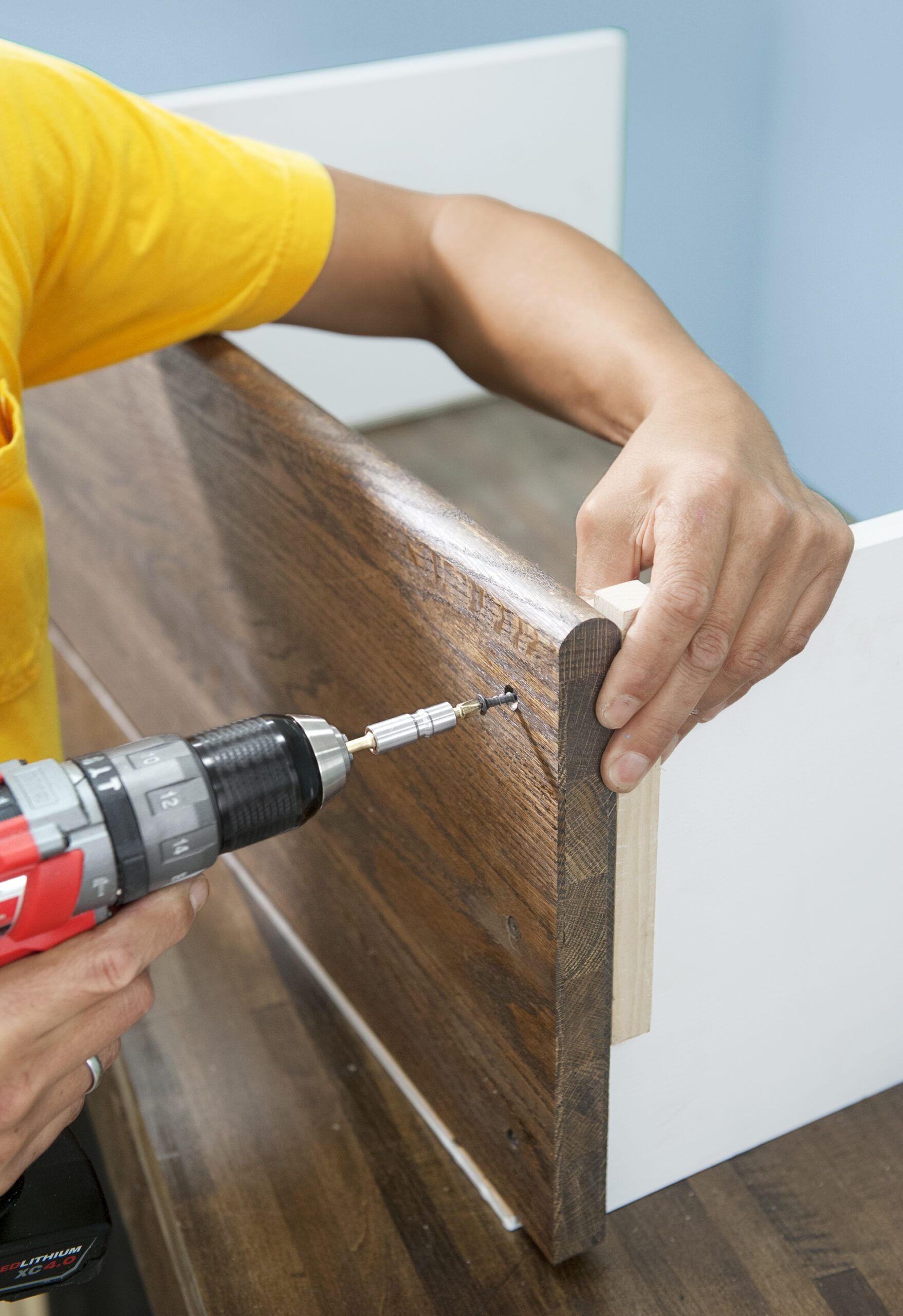
Stand the top tread on edge with its bullnose up and slip a scrap piece of backing beneath it. Add a bead of construction adhesive to the end grain of a sidepiece. Then, bring that sidepiece perpendicular to the tread and use a scrap of 1 as a spacer to inset it from the end of the tread. Now screw through the pilot holes in the tread and into the top edge of the sidepiece with 1 5/8-inch trim-head screws. Repeat on the other side. Attach the bottom tread, screwing up through it and into the bottom edges of the sidepieces.
Step 6: Add the Shelf and Dividers
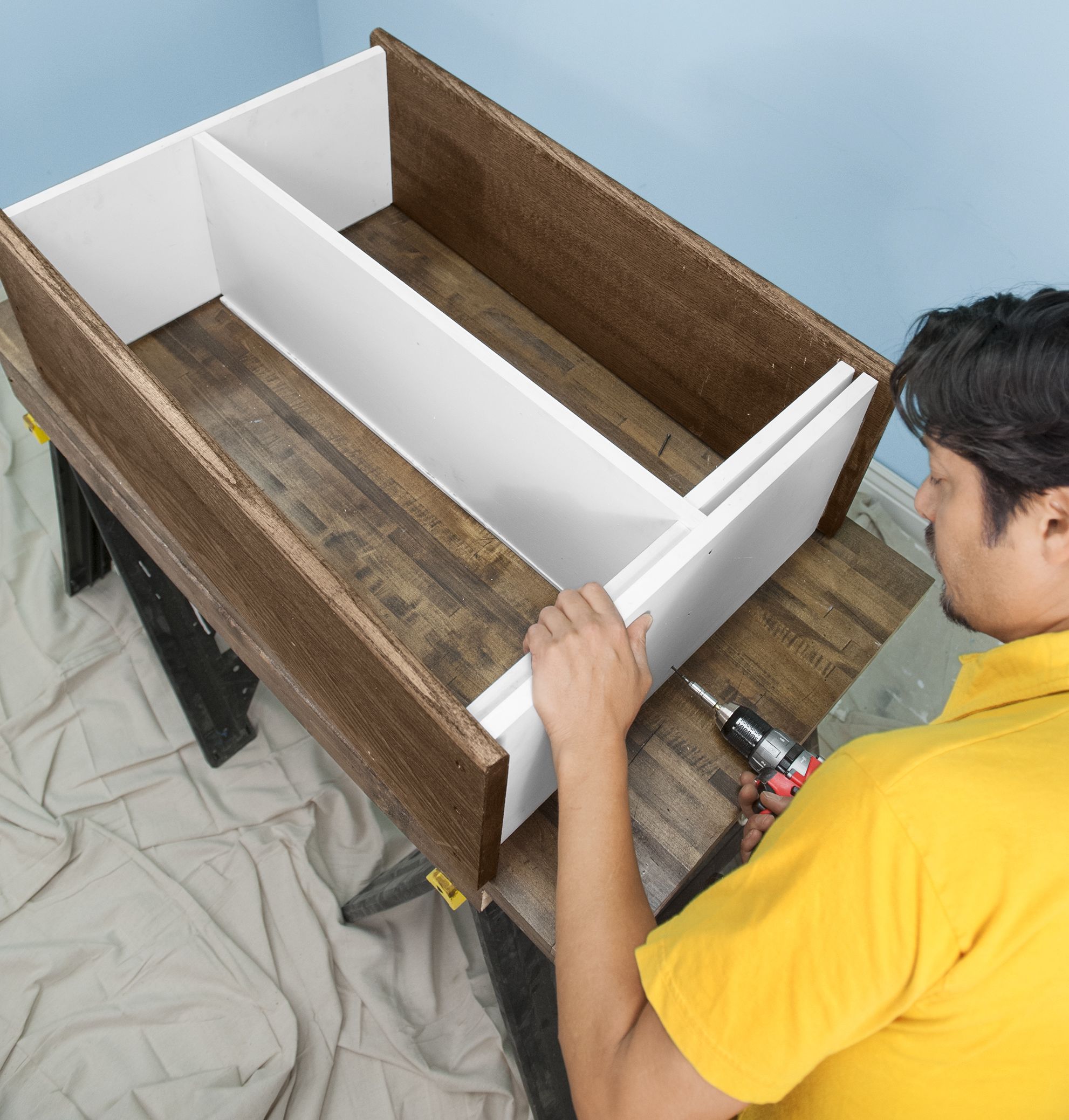
Slip the center shelf between the sides, use the shelf dividers to set its position at one end, then screw through the sidepiece and into the edge of the shelf with the trim-head screws, as shown.
Reset the dividers at the other end and screw it in place. Now position the shelf dividers with their front edges flush with that of the center shelf, then screw through the shelf and into the dividers. To attach the dividers’ opposite ends, drill pilot holes through the treads and secure the dividers with the trim-head screws, using a rafter square to keep them perpendicular to the treads. Set the upper cabinet aside.
Step 7: Add the Ends
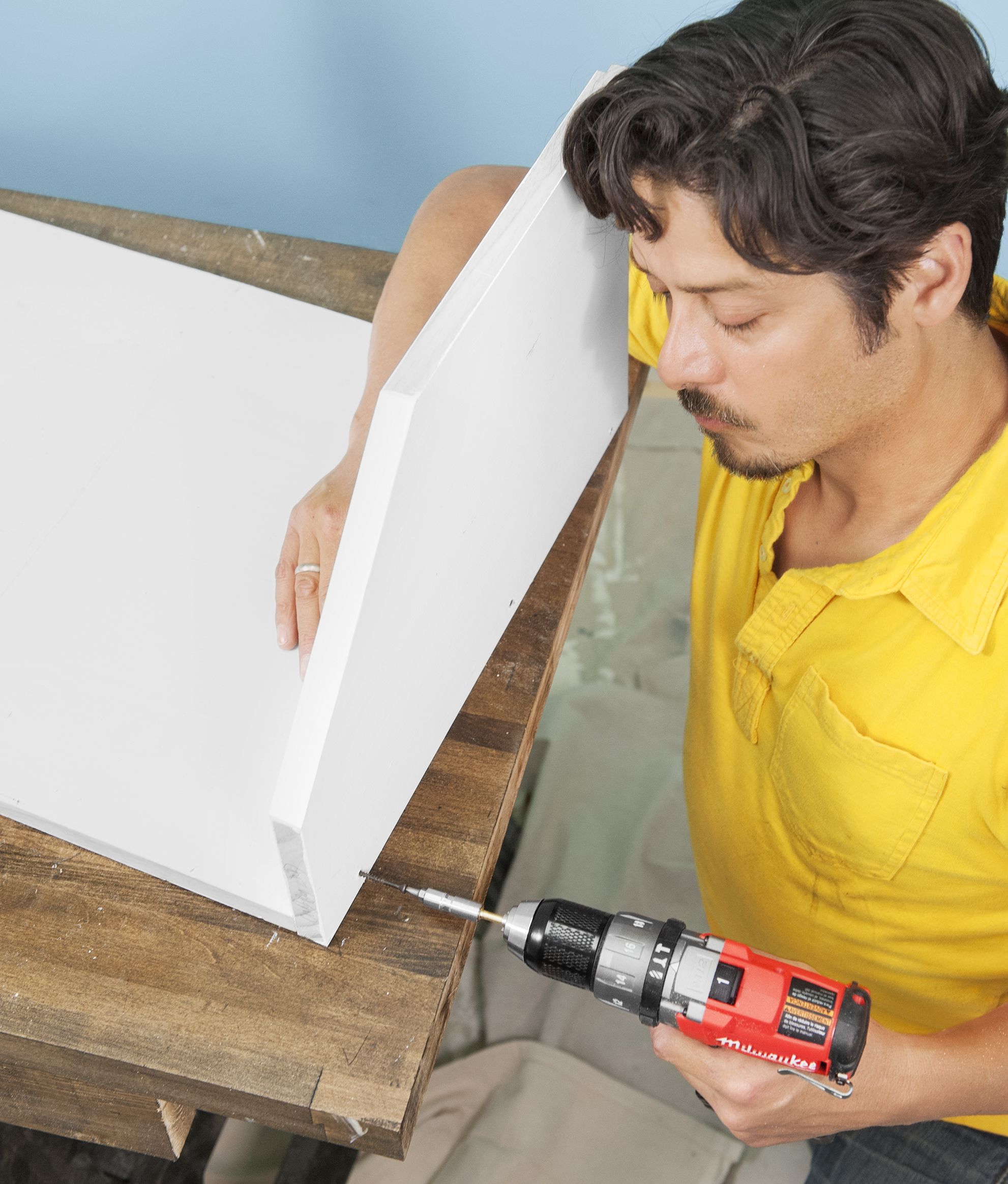
Rest the base for the cubbies on the work surface. Position a rabbeted cubby end with its front edge flush with that of the base. Screw through the end and into the edge of the base, as shown, with the trim-head screws. Attach the opposite cubby end. Now split the base into thirds, marking the locations of the two dividers, and attach them by screwing through the underside of the base.
Step 8: Square the Cubbies
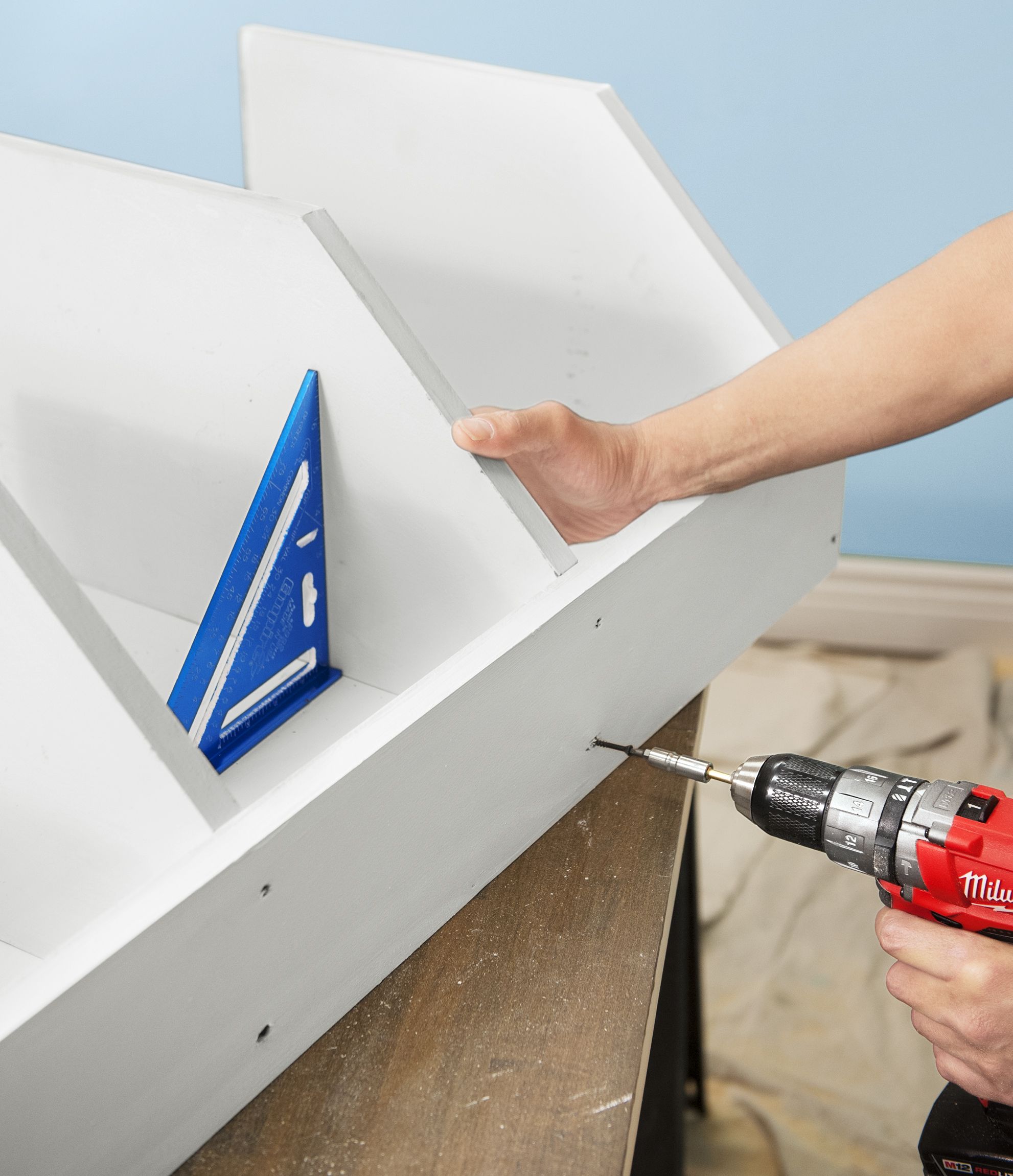
Position the fascia against the front edges of the cubby ends and dividers; drive trim-head screws through it and into the end edges, then the divider edges. Use a rafter square, as shown, to square up each divider before screwing it in place.
Tip: To make squaring the cubby dividers easier, screw the fascia to the ends first to prevent racking.
Step 9: Attach the Brackets
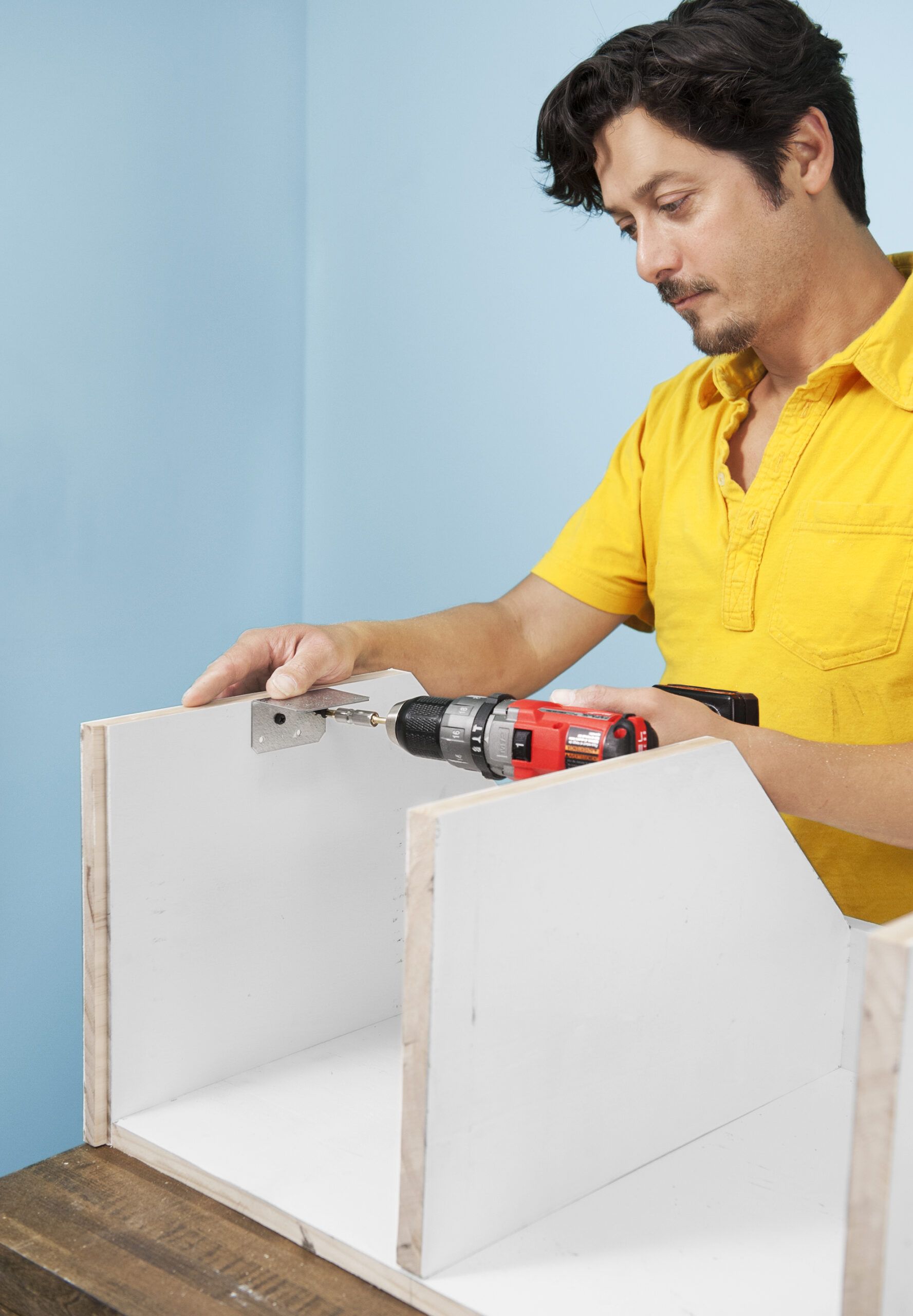
Center an angle bracket on the inside face of one cubby end and hold it flush with the piece’s top edge. Fasten it with 7/16-inch pan-head screws, as shown, then repeat on the other end.
Step 10: Mark the Upper Cabinet
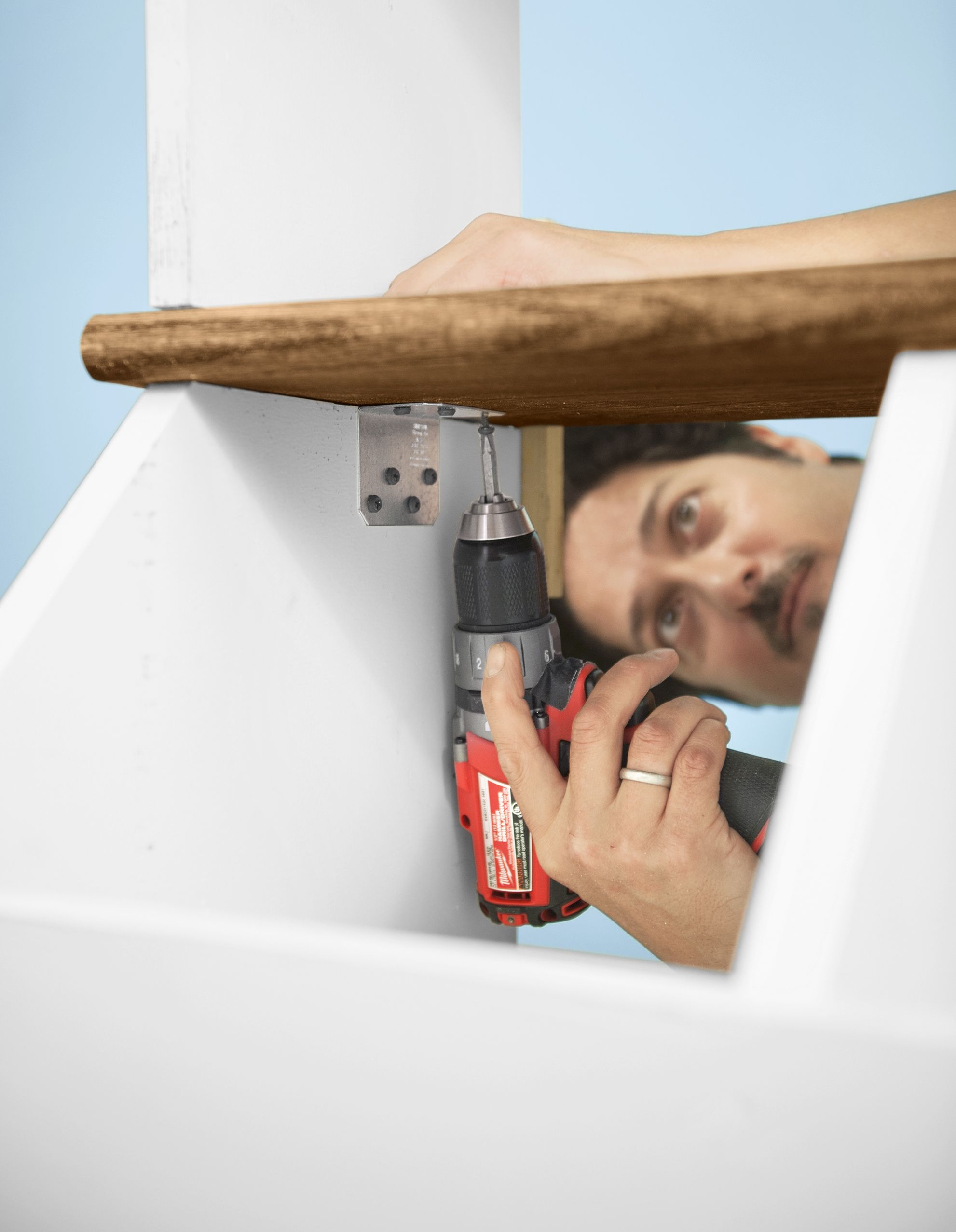
Center the upper cabinet on the base so the lower tread has a 3/4-inch overhang on each end, using your 1 scrap to check. Move the upper cabinet forward so the rear of the tread is flush with the rabbeted edge you made. Reach through the back of the cubbies and drive pan-head screws through the bracket and into the underside of the lower tread, as shown—no pilot holes required. Repeat on the other side.
Step 11: Paint the Back
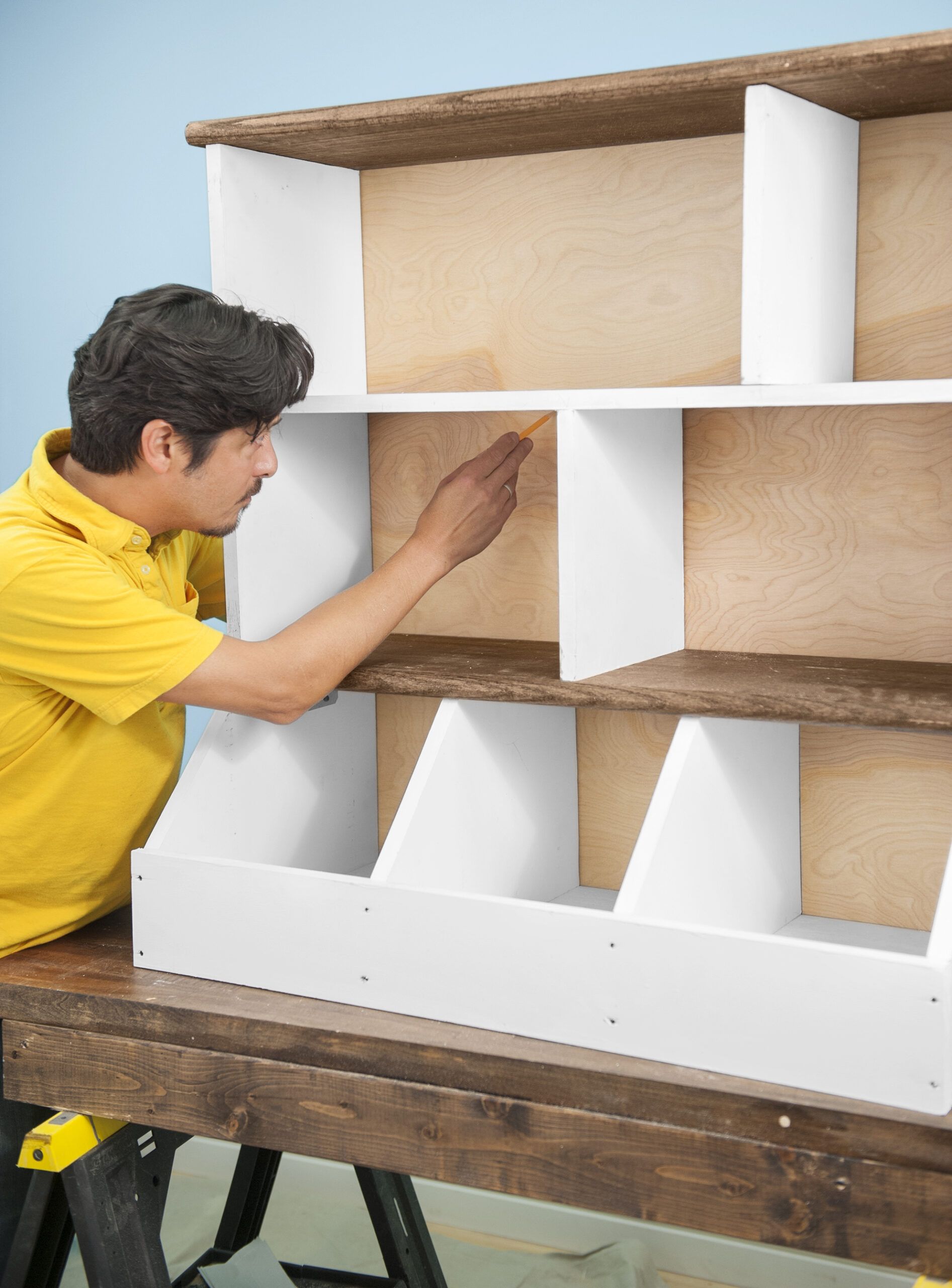
Measure the opening of the back, then cut the lauan to fit. Use painter’s tape to temporarily hold the back between the rabbeted edges. As shown, use a pencil to outline the rectangles that get the accent color. Paint the accent color, paint the rest of the back white, and let everything dry.
Step 12: Attach the Back
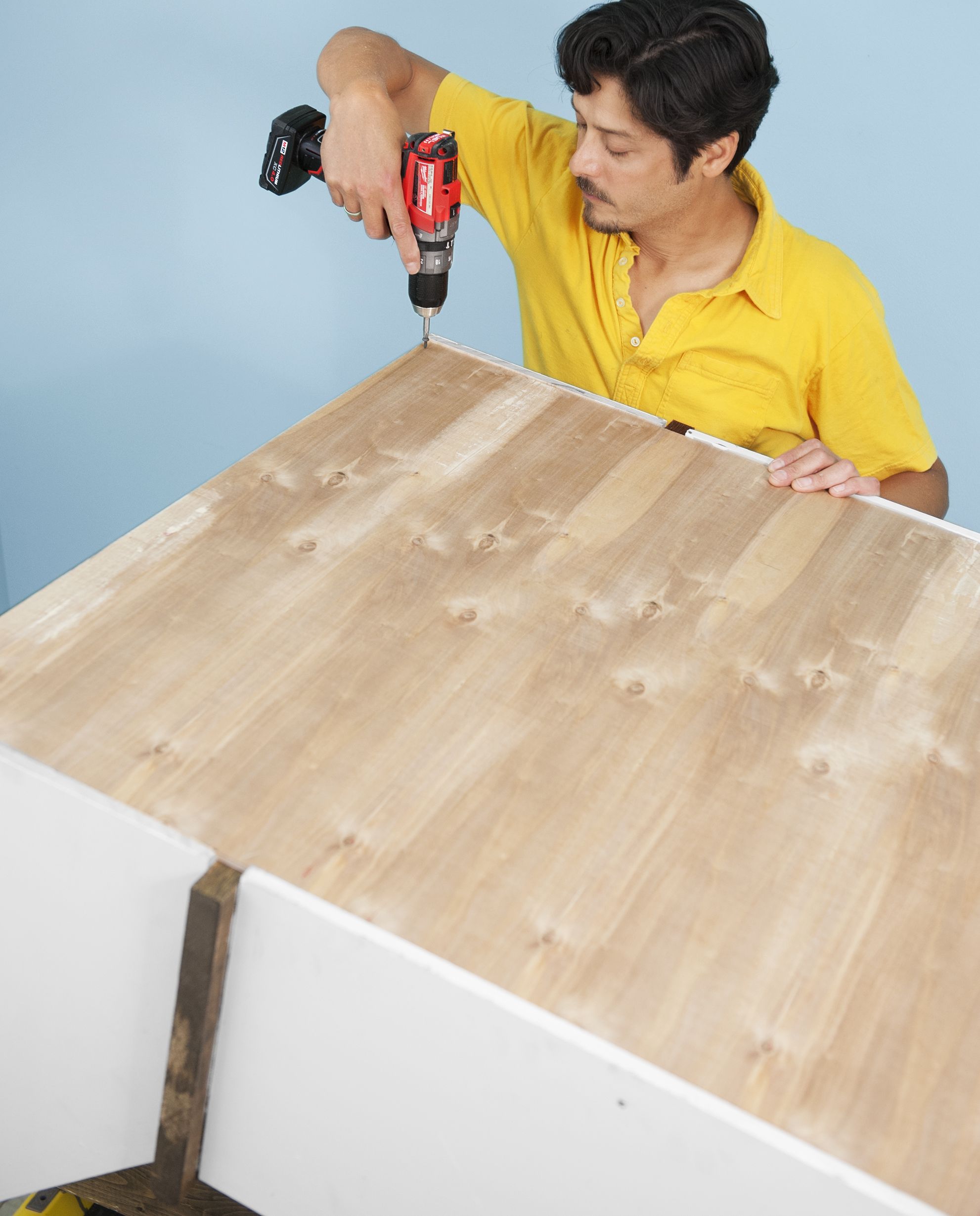
Tip the cabinet on its face and drop the painted back in place. Drive pan-head screws into each corner and then several between them along all four edges.
Step 13: Add the Casters
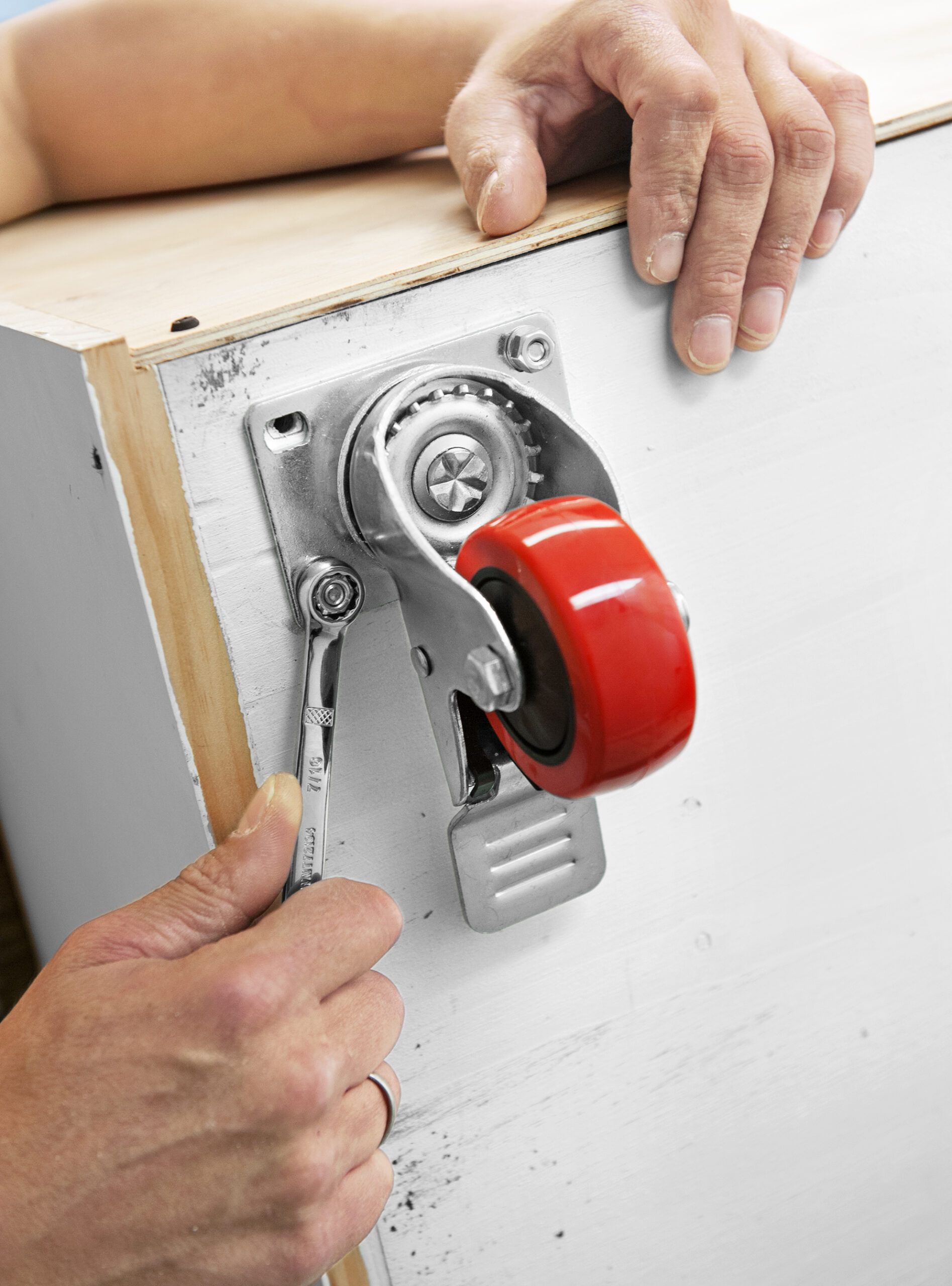
Hold a caster in position on a corner and mark the mounting holes. Drill 1/4-inch-diameter holes through the underside of the base. Attach the caster with carriage bolts, lock washers, and nuts using a wrench, as shown. Repeat the process for the remaining casters, then turn the bookcase right-side up. Add wood filler to screw holes and give the bookcase a final coat of paint.
Tips for Customization for Your Child’s Bookcase
Consider these ideas to personalize your child’s bookcase:
- Add decorative elements like stencils or decals for a unique touch.
- Incorporate a small desk area for drawing or homework, making the space even more multifunctional.
- Install hooks on the sides for hanging items such as bags or coats.
- Select paint colors that resonate with your child’s style or room theme.
These customization options allow you to tailor the bookcase to your child’s needs and preferences, turning a simple design into a personalized piece.
Maintenance and Bookcase Safety
Follow these safety guidelines for your child’s bookcase:
- Clean the shelves with a damp cloth to remove dust and debris, keeping the bookcase looking its best.
- Educate your child on properly using and caring for the bookcase to encourage responsibility.
- Regularly check and tighten any loose screws to maintain stability.
- Secure the bookcase to the wall to prevent tipping, which is especially important in a child’s room.
Addressing these maintenance and safety tips helps the bookcase remain a durable and safe addition to your child’s space.










